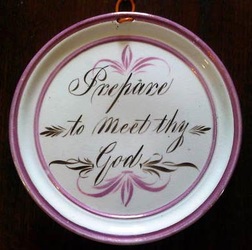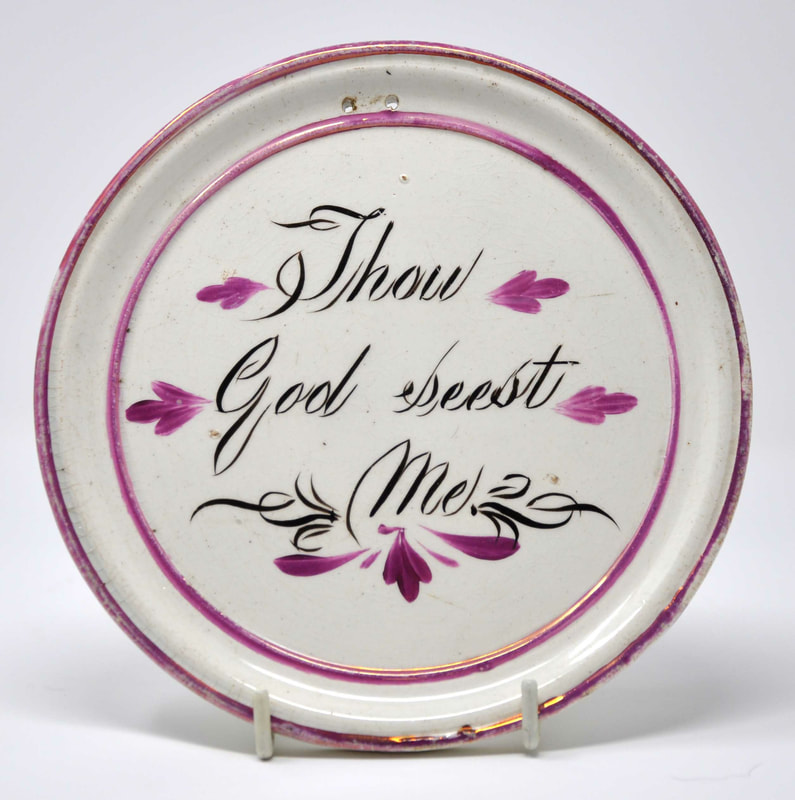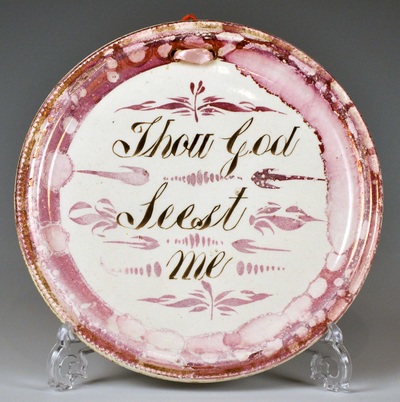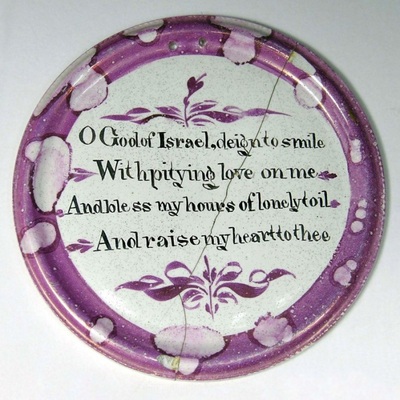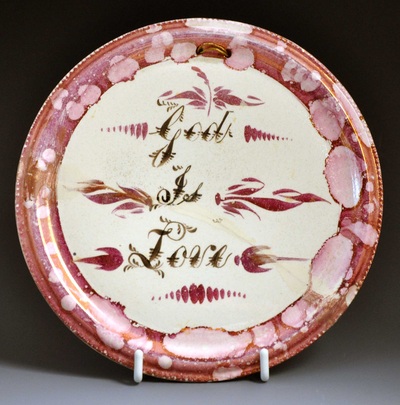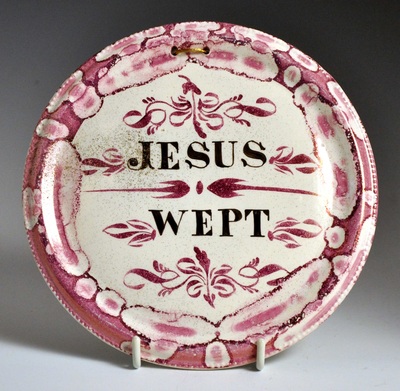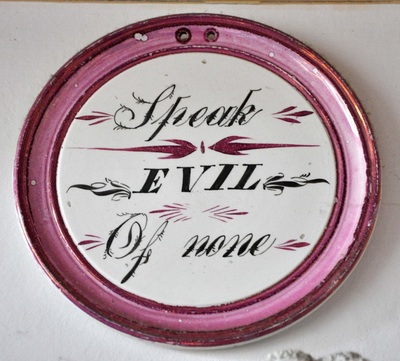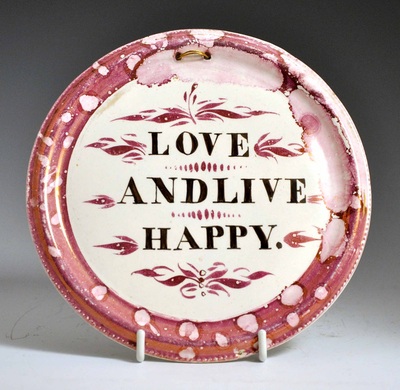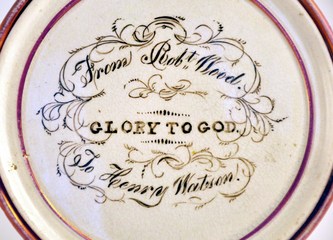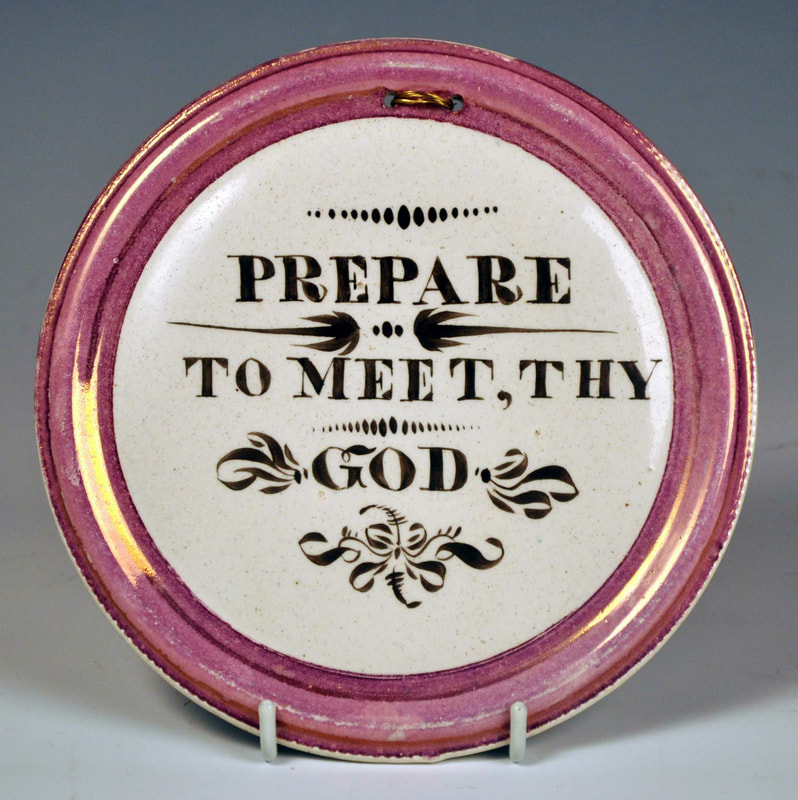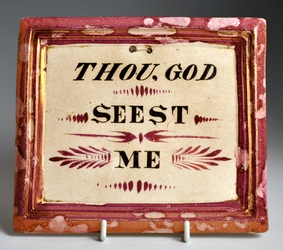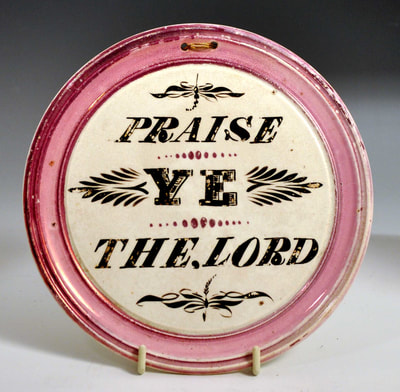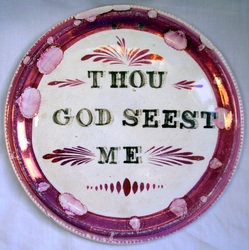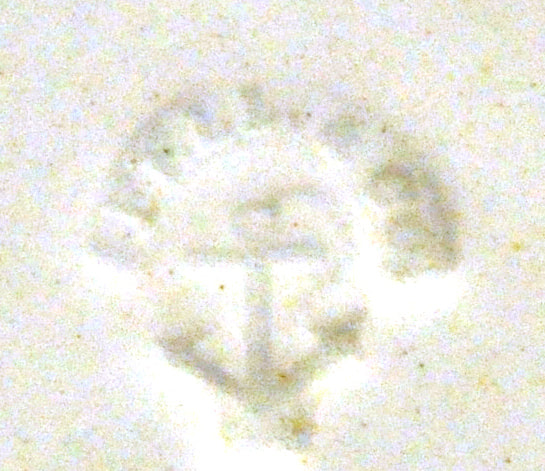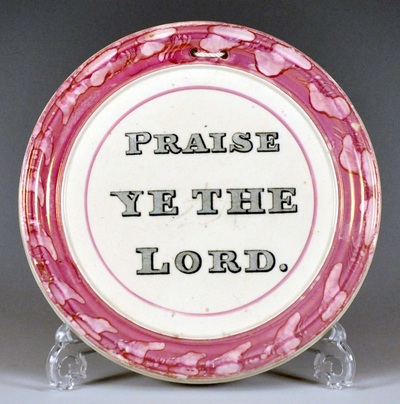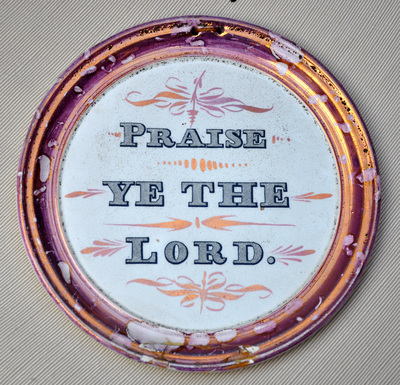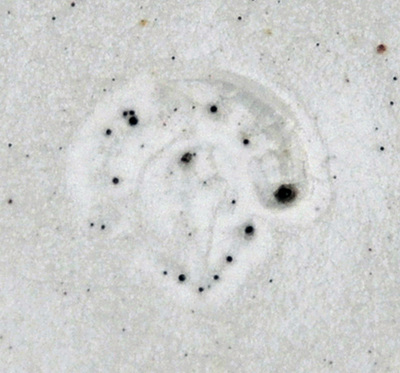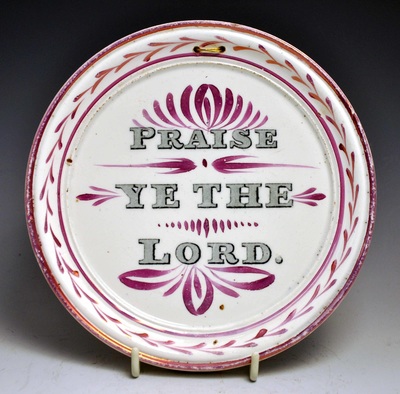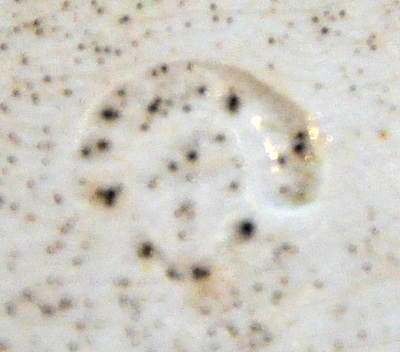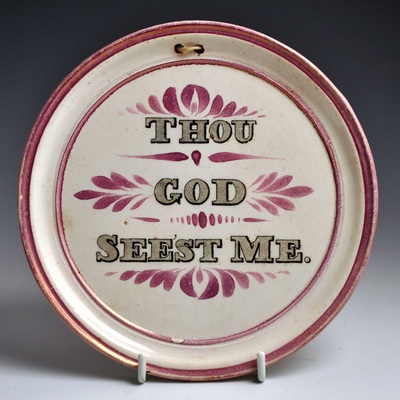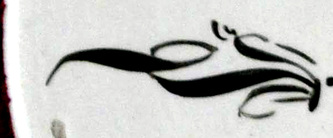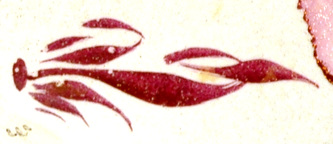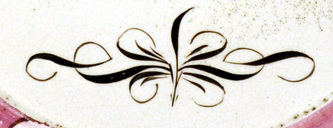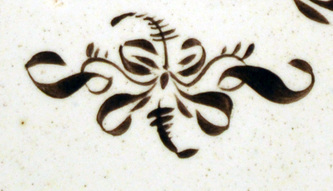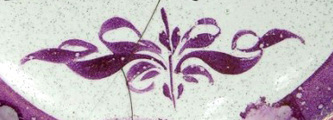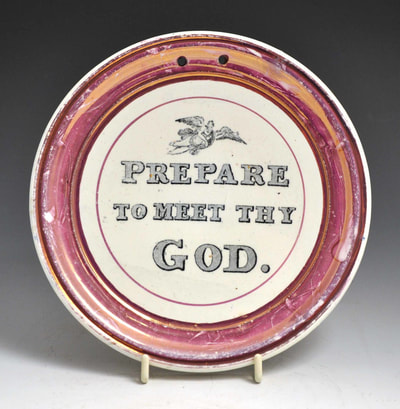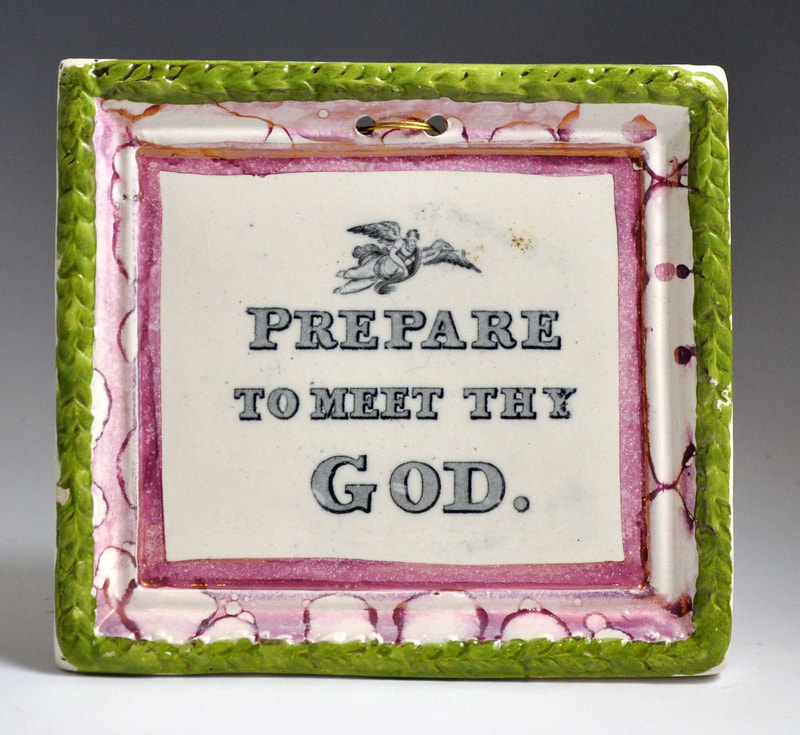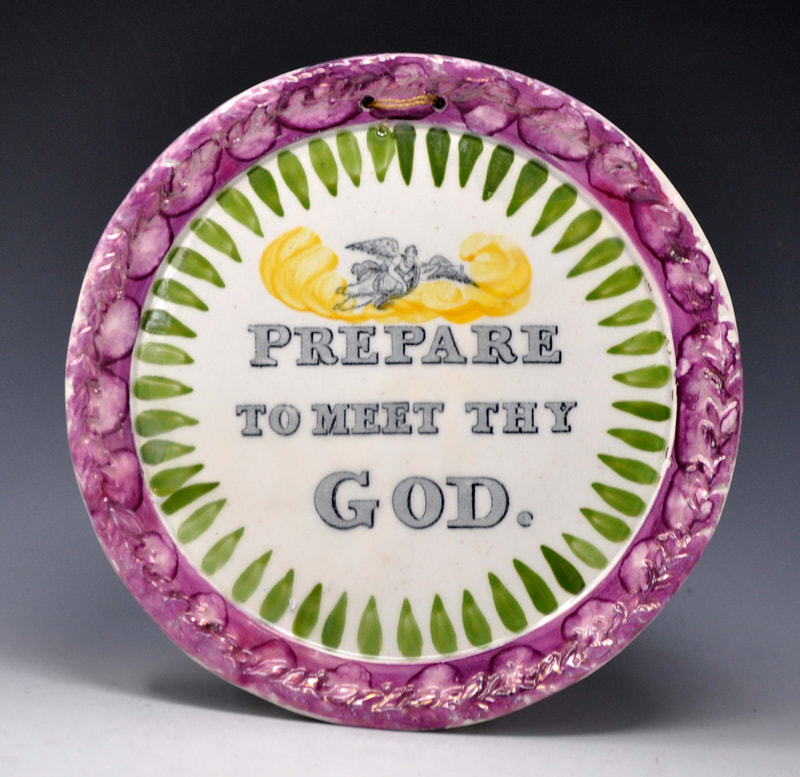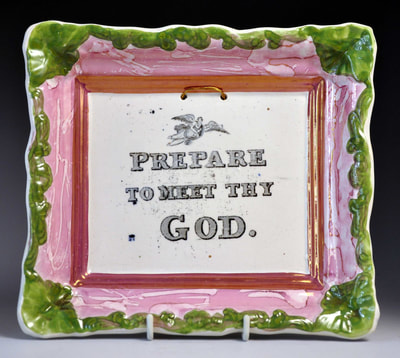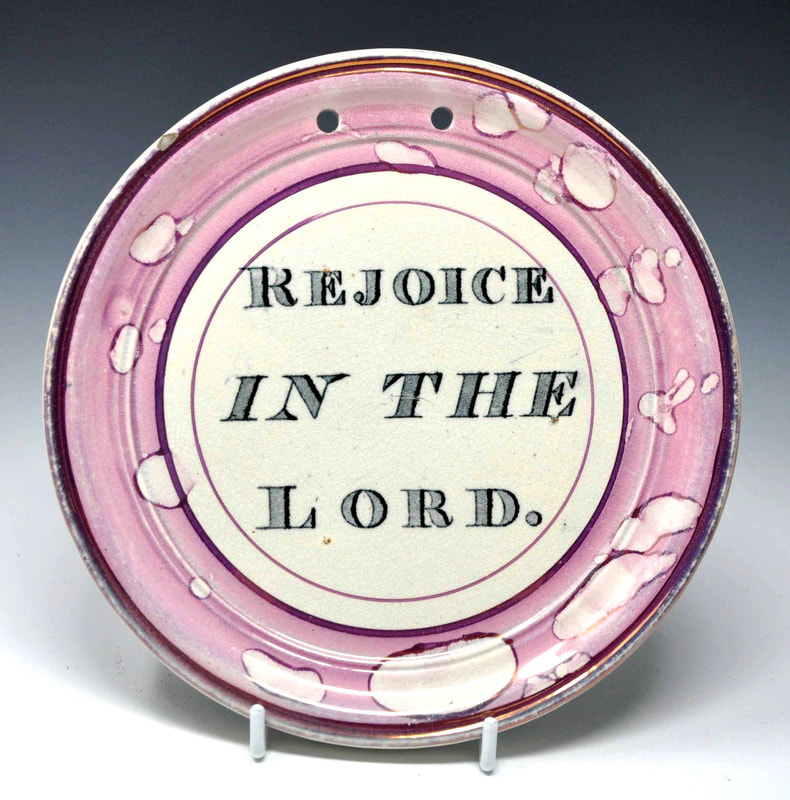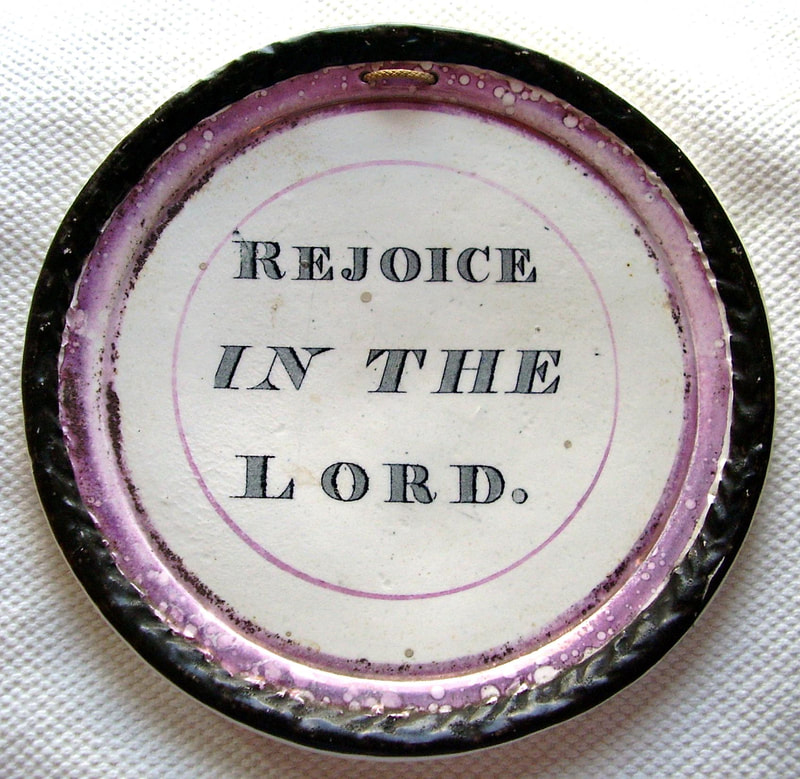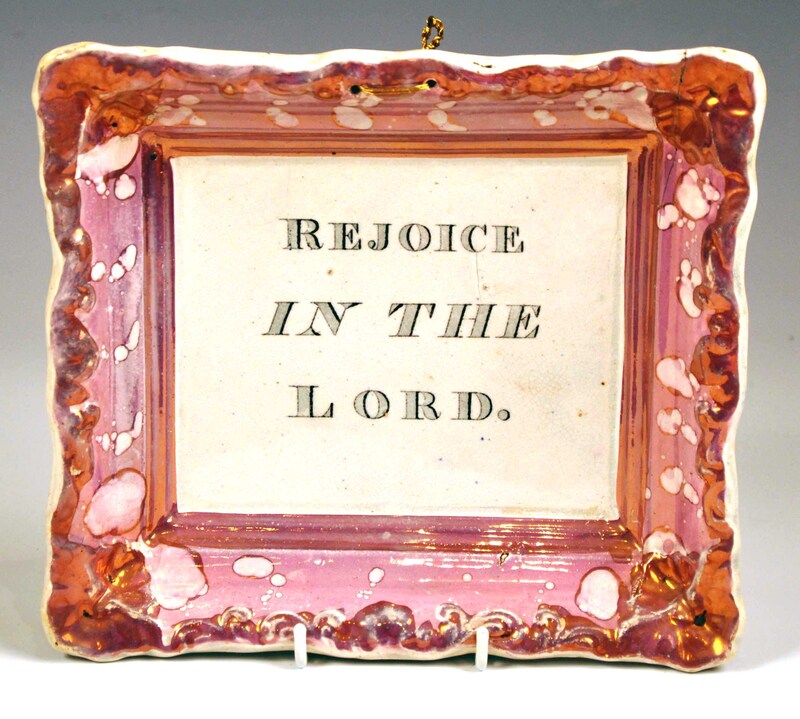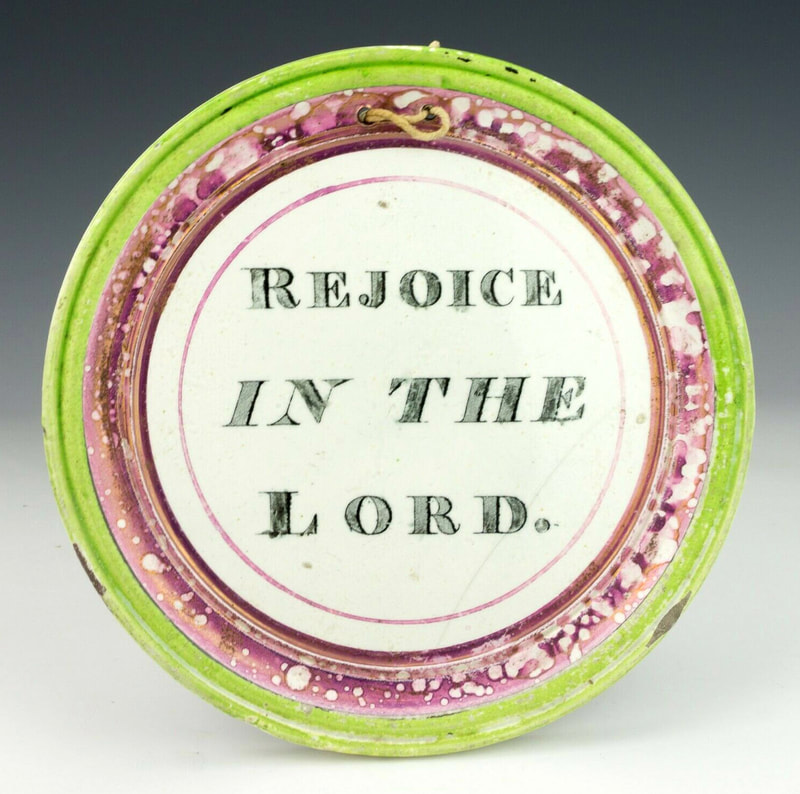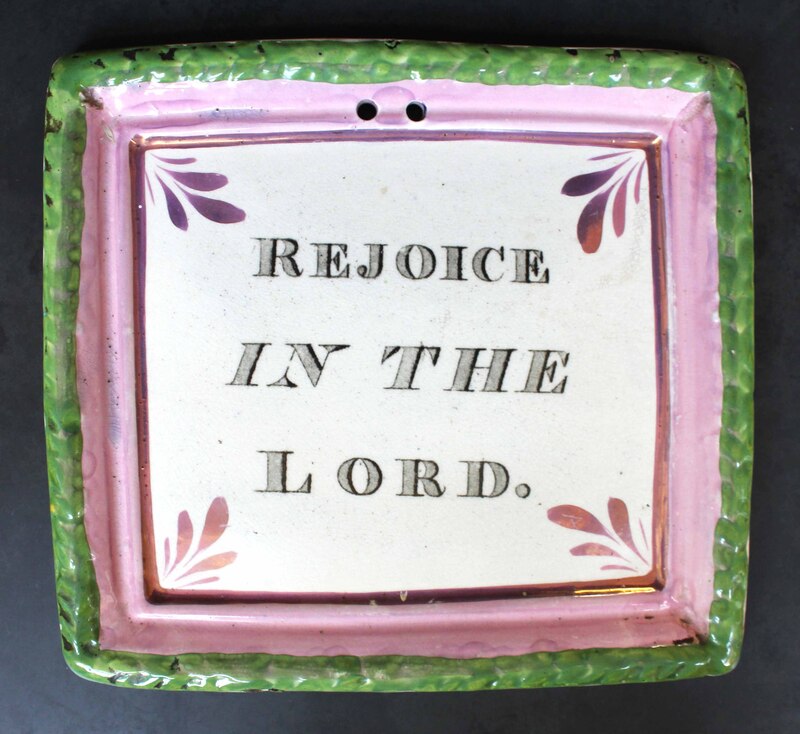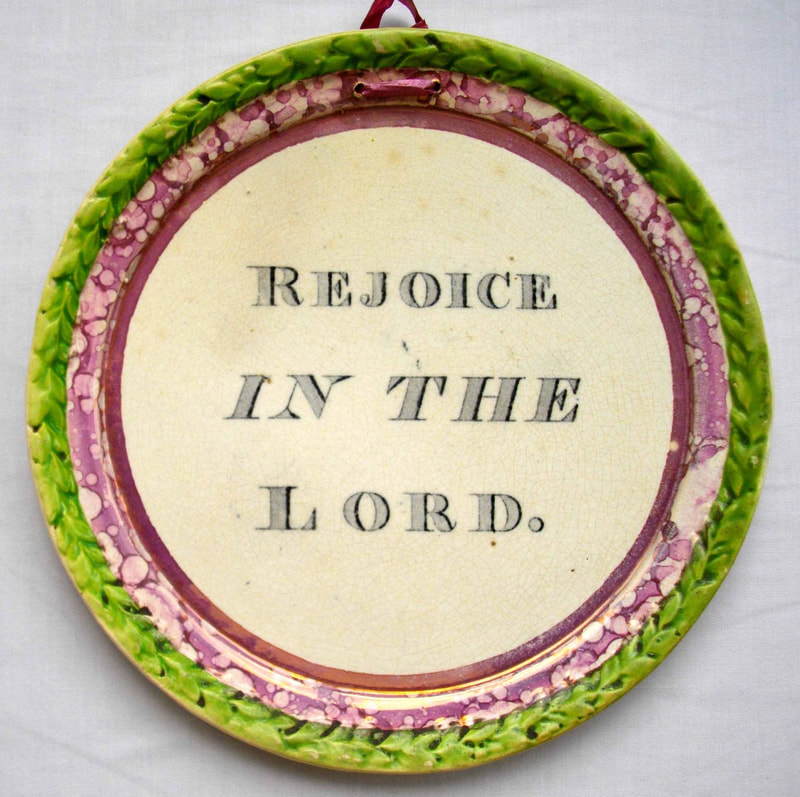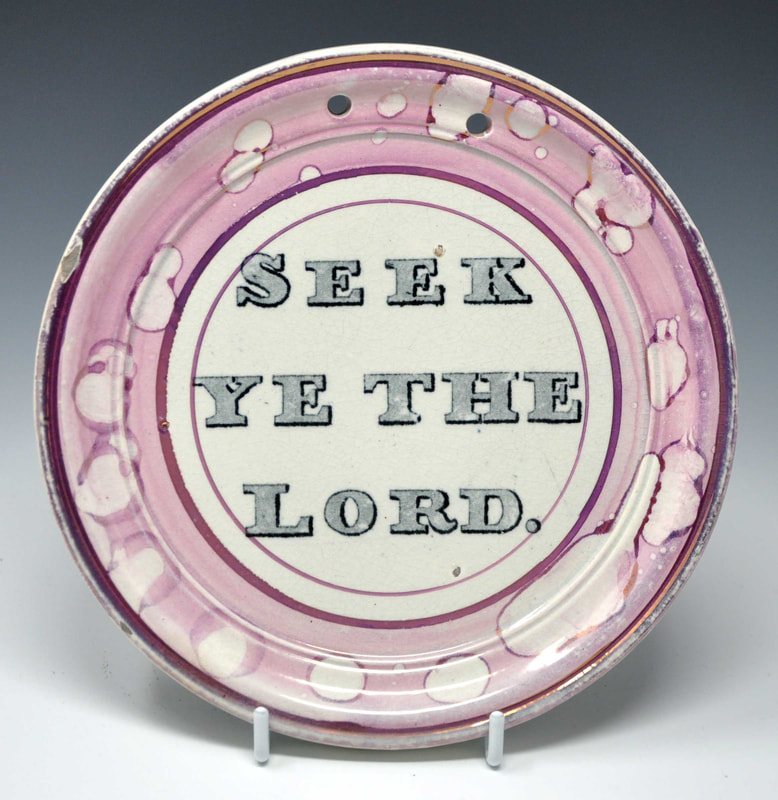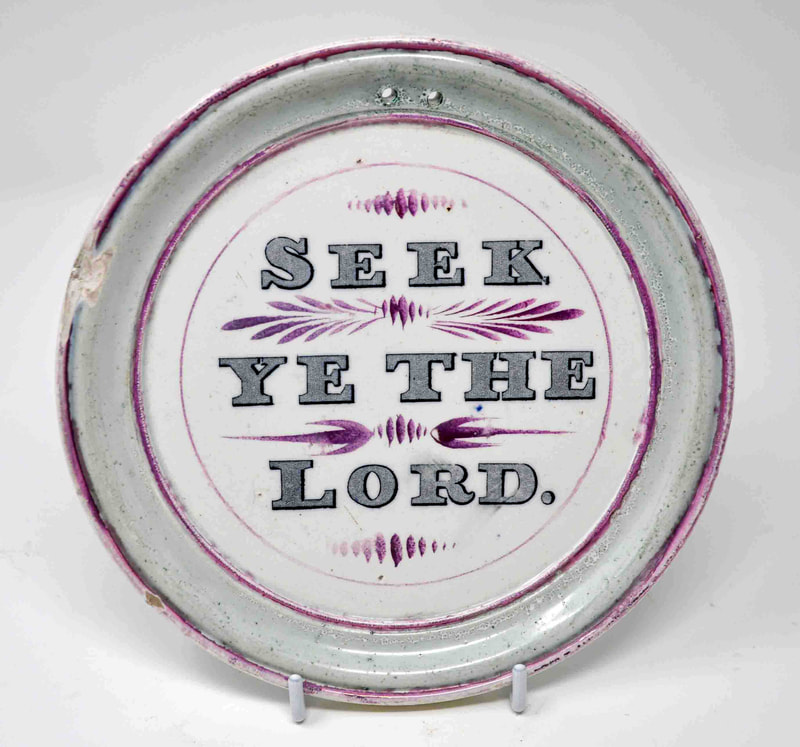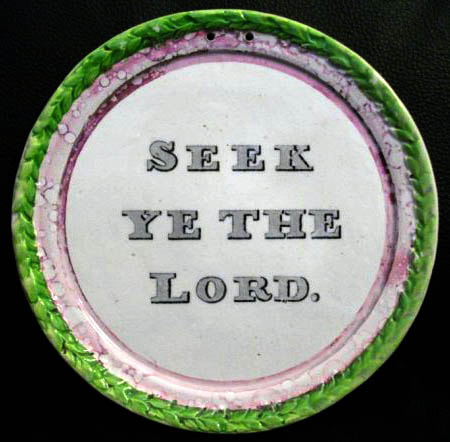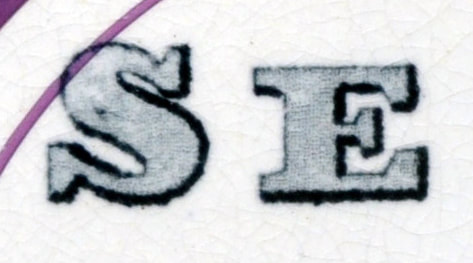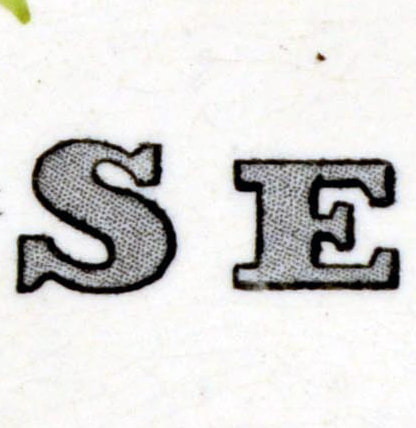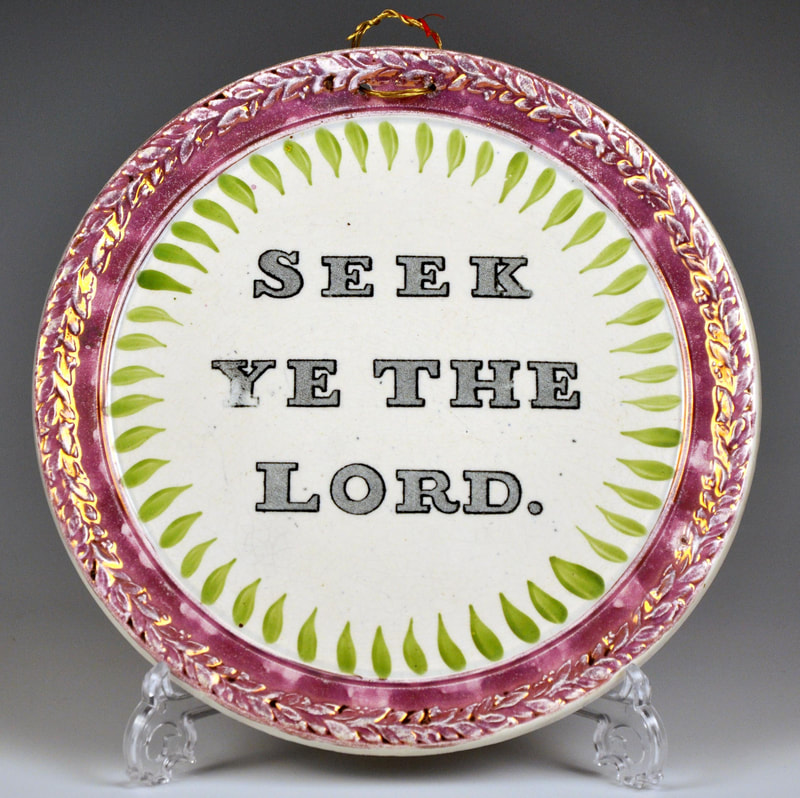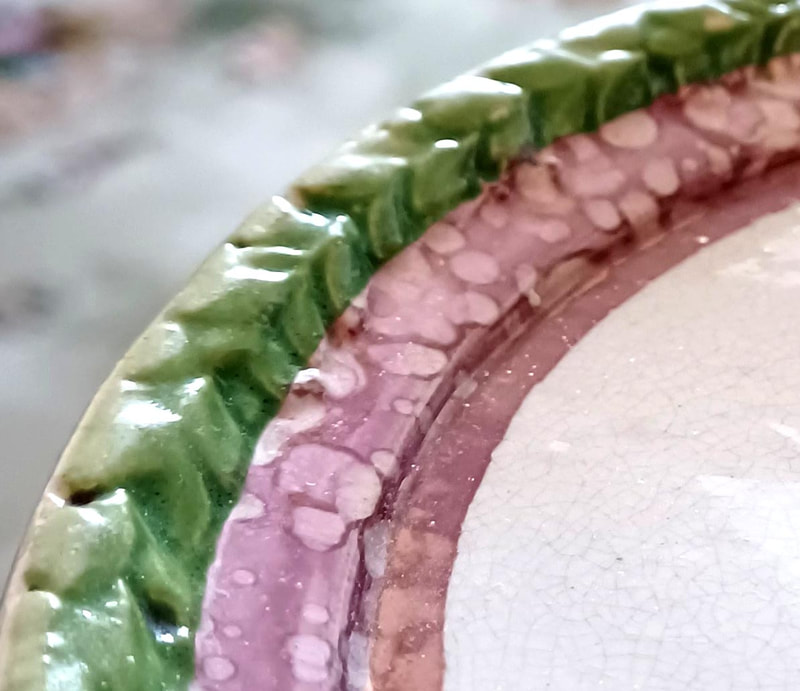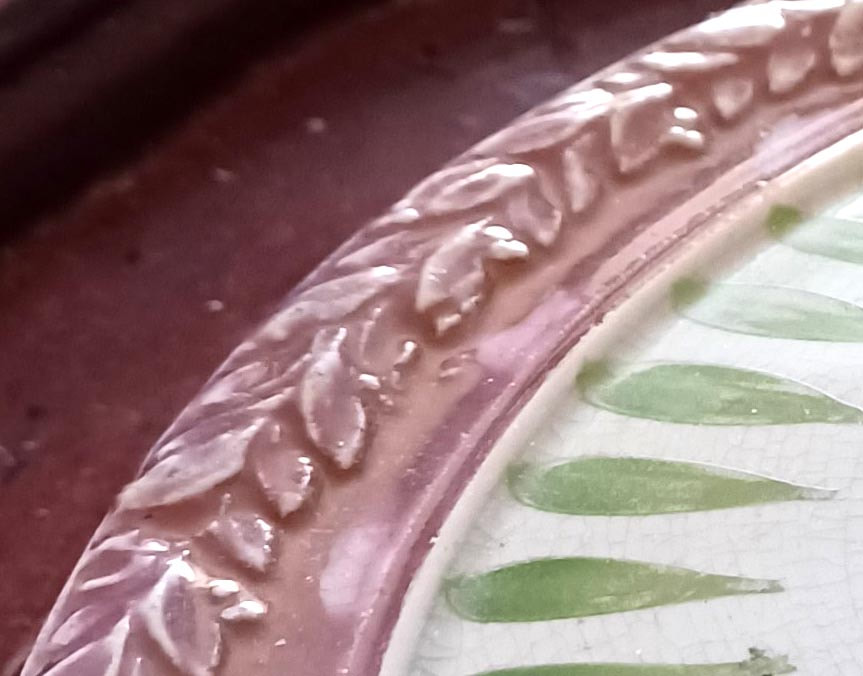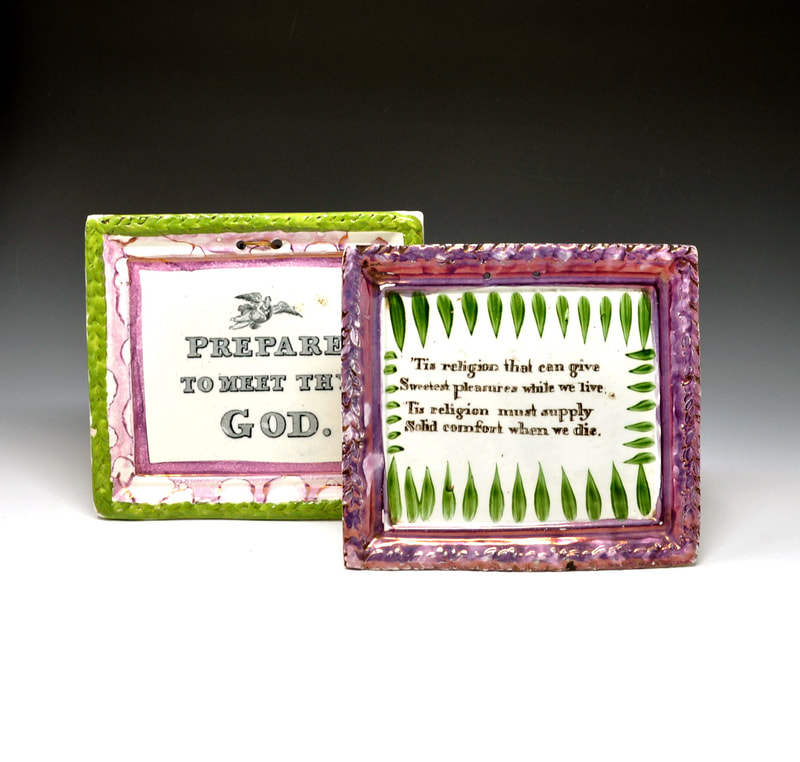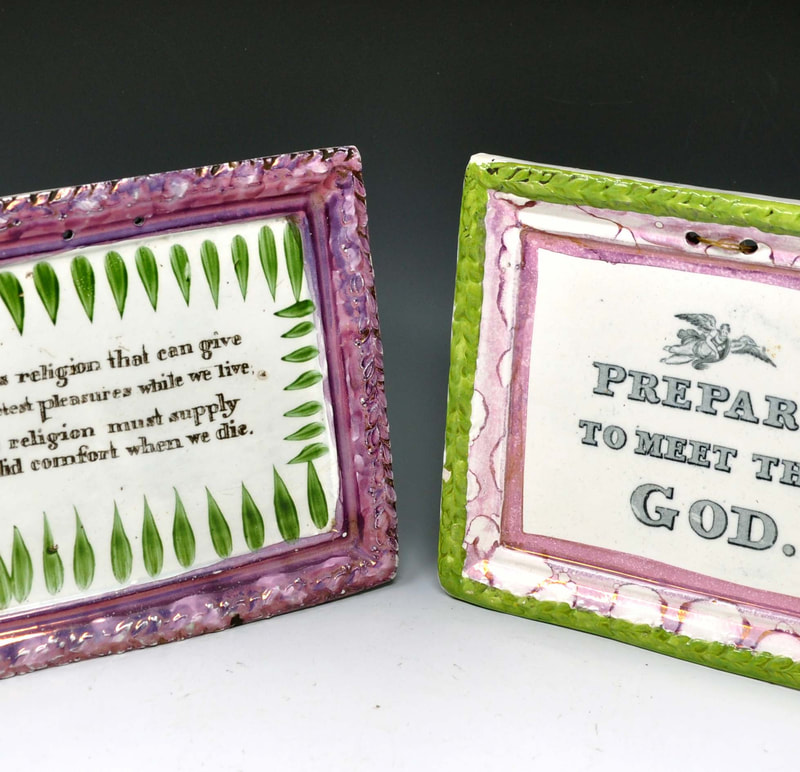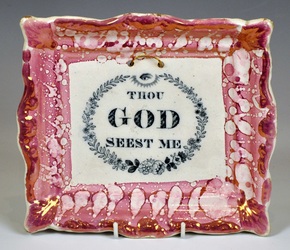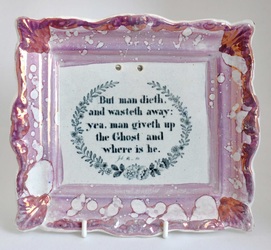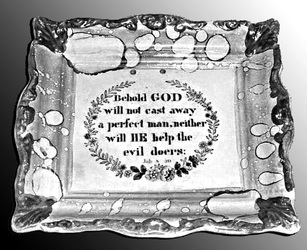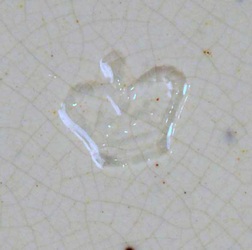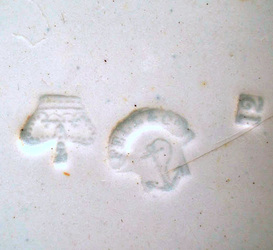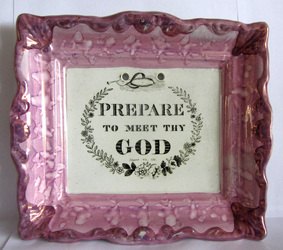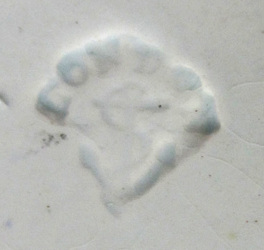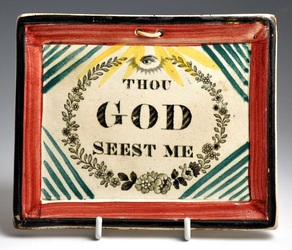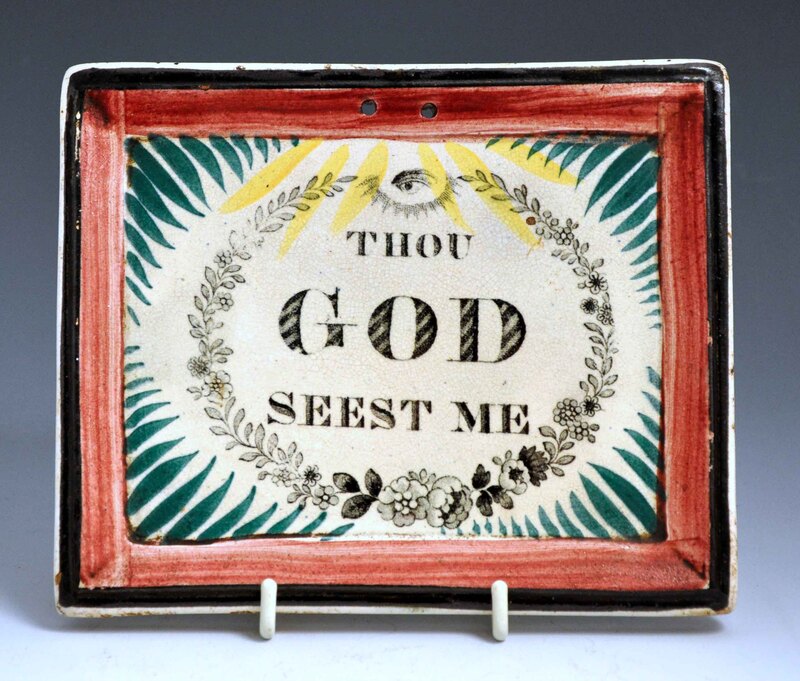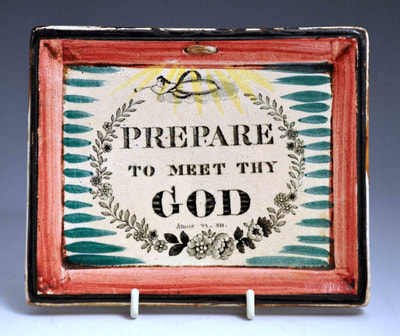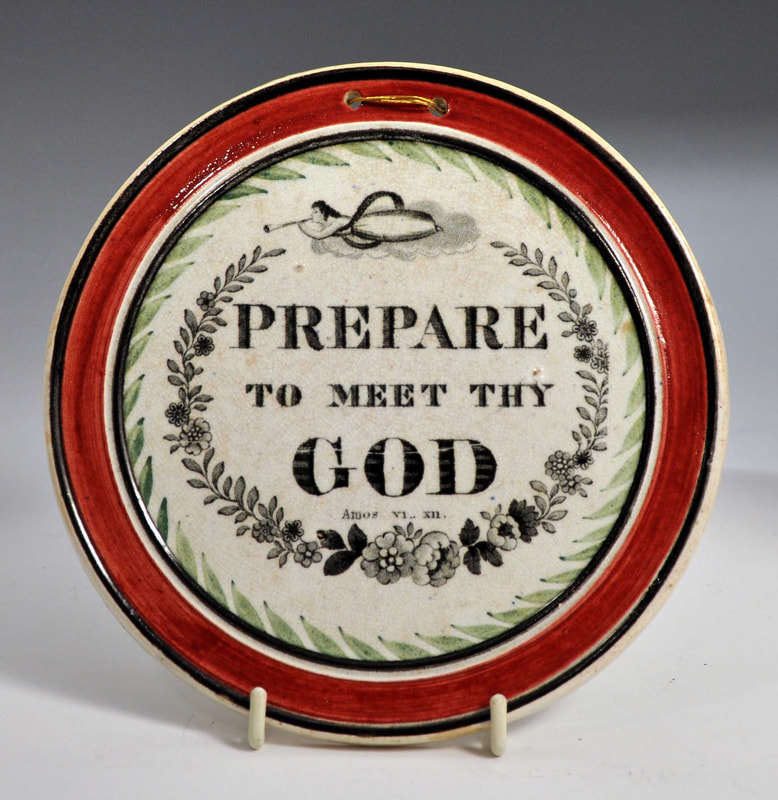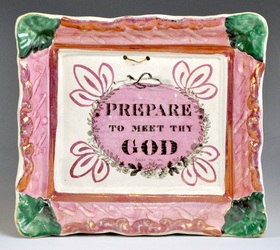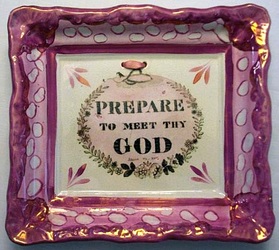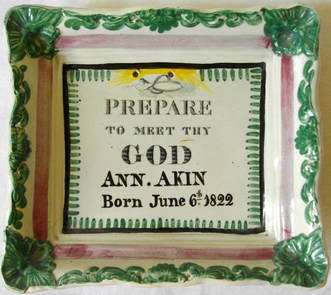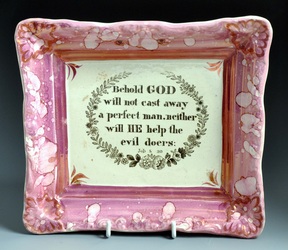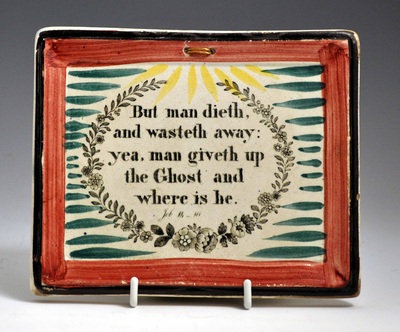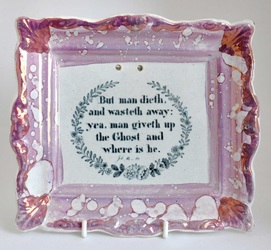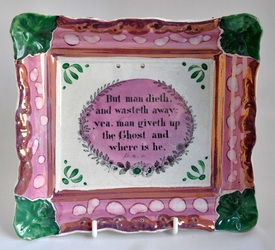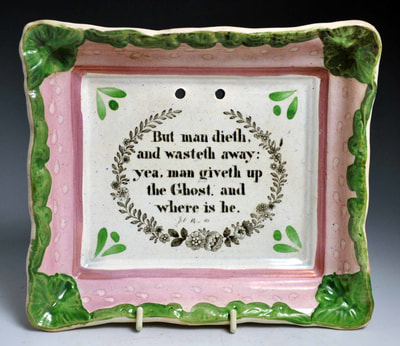Thomas Fell, St Peter's Pottery, Newcastle
Thomas Fell and Thomas Bell established the St Peter's Pottery in 1817, under the company name Thomas Fell & Co. In 1869, the firm became a limited company. The factory closed in 1890. The first plaque below has a 'FELL & CO' impressed mark over an anchor. The others in this group are unmarked and attributed to Fell on the basis of similarities of script and decoration to marked plaques.
Hand-painted plaques
A unique hand-painted plaque with the inscription 'From Robt. Wood. GLORY TO GOD. To Henry Watson.' Although the plaque is unmarked, the plaque mould and decoration are similar to the first Fell-impressed plaque above.
The next five plaques are also unmarked. They are attributed to Fell on the basis of similarities to the plaques in the group above, e.g. the letter 'S' in the second and fourth plaque. N.B. the decorative motif that Ian Holmes has referred to as 'colliding meteorites' (see first and second plaques below), also appears on plaques marked Dixon Co from the 1850s.
Common verse transfers with similar decoration
Fell also produced early transfer-printed plaques, c1830s (see below). The impressed marks (some indistinct), belong to the plaques on their left. The others are unmarked but attributed to Fell because they share the same transfers.
Flamboyant decorative elements appear on both plaques with transfers and those with hand-painted text. These are, so far as I know, unique to Fell.
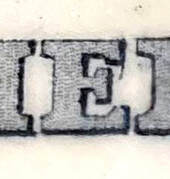
None of these plaques is marked. They do, however, link the pink circular plaques above with the groups of plaques below. Note the position of the hanging holes in the last plaque. All have a transfer from the same copper plate. On the first three there is an easily visible scratch on the first 'E' in 'MEET', that comes down from the top of the letter.
Rejoice in the Lord
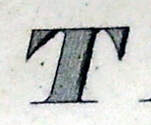
Although these plaques are all again unmarked, the first below is of the same circular form as those above. There is a small dink on the transfer plate that appears as a speckle to the left side of the letter 'T', most noticeable on the second plaque below (detail from that plaque shown right).
These plaques also appear with green enamels. All have the speckle to the left of the 'T'.
Seek Ye The Lord
The plaques above come from a different transfer plate to the plaque below. Compare the letter 'S' from the first plaque above (first detail) with the plaque below (second detail). I had previously attributed the plaques with neat green flecks of enamel to Robert Maling, but now think it is more likely they were made by either Thomas Fell or Carr & Patton. See further down the page for a Fell example with green flecks. See here for a comparison of green-flecks on jugs.
However, a link to Robert Maling
See the Maling page for a rare verse plaque apparently from the same (or a very similar) mould.
Later plaques with impressed marks
Most of the attributions on this page stem from links to the c1850 plaques above, which have an impressed crown mark (see bottom left). This mark sometimes appears on other wares in conjunction with the Fell & Co over impressed anchor mark (see bottom right, from the reverse of the willow pattern plate beside it). Fell appears to have acquired the copper transfer plate with these verses from Turpin's Ouseburn Pottery (read more here).
These transfers also rarely appear in conjunction with the London impressed mark. Variations of this mark were used by several North Eastern potteries, including Fell. The mark most likely designated items destined for a London distributor.
The five Fell plaques above have another distinguishing feature. The holes for hanging are pierced through the central rectangle of plaque, rather than through the lustre border. This feature is apparently unique to Fell, and may help us expand the group of transfers above. Read more here.
The five Fell plaques above have another distinguishing feature. The holes for hanging are pierced through the central rectangle of plaque, rather than through the lustre border. This feature is apparently unique to Fell, and may help us expand the group of transfers above. Read more here.
Thou god seest me
These plaques are printed from the same transfer plate as the crown-impressed plaque above. The all-seeing eye, a feature associated with early Maling plaques, was likely added by an engraver in the 1840s, when the copper transfer plate moved from Turpin's Ouseburn Pottery to Fell. The first two rectangular plaques have a yellow sunburst decoration around the eye, also used by Maling, so it appears that Fell copied the decorative innovations of its Tyneside neighbour. Note the position of the hanging holes on the last two plaques.
Prepare to meet thy god
The plaques above share the same transfer as the plaque with the impressed London mark (see above). The plaque below has collaged pieces of the transfer. The holes are pierced just above the transfer through the centre of the plaque, which appears to be a feature unique to Fell. It also has the yellow sunburst around the angel that appears in the first plaque above.
Behold god...
These plaques share the same transfer as the crown-impressed plaque above. The decoration of the plaques is similar to those with the other verses above. The right plaque has hanging holes are pierced through the lustre border.
But man dieth...
Again, these plaques share the same transfer as the crown-impressed plaque (top right) and the decoration of the last two is similar to those in the sections above.
